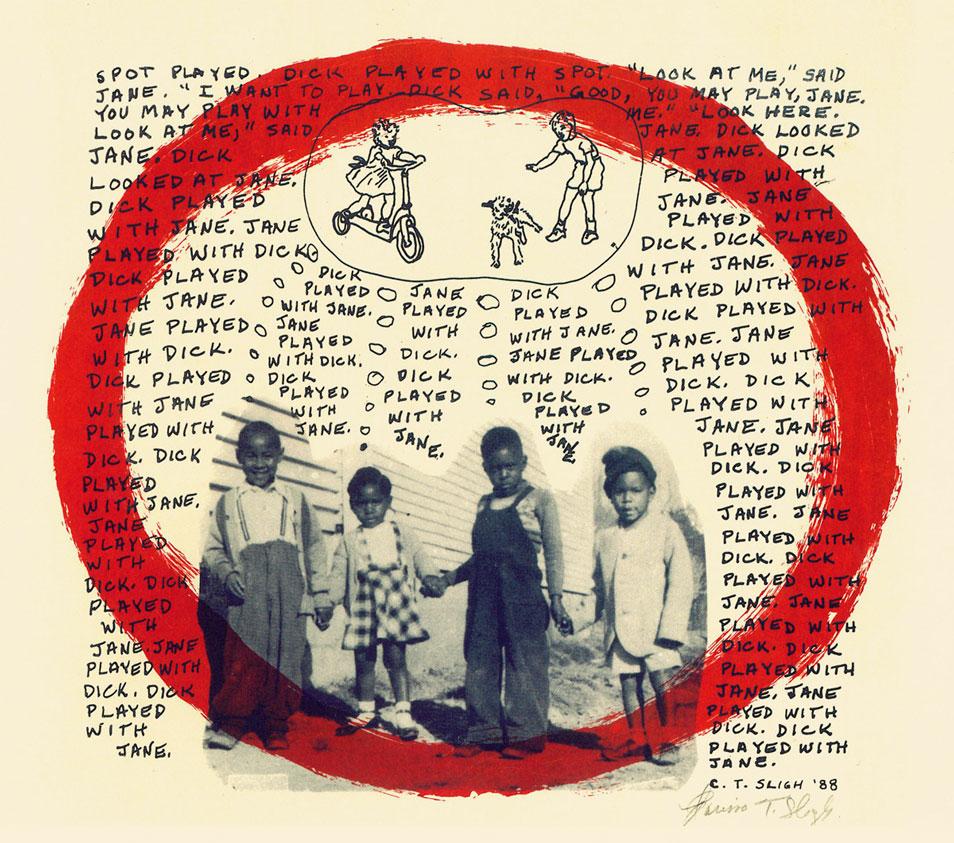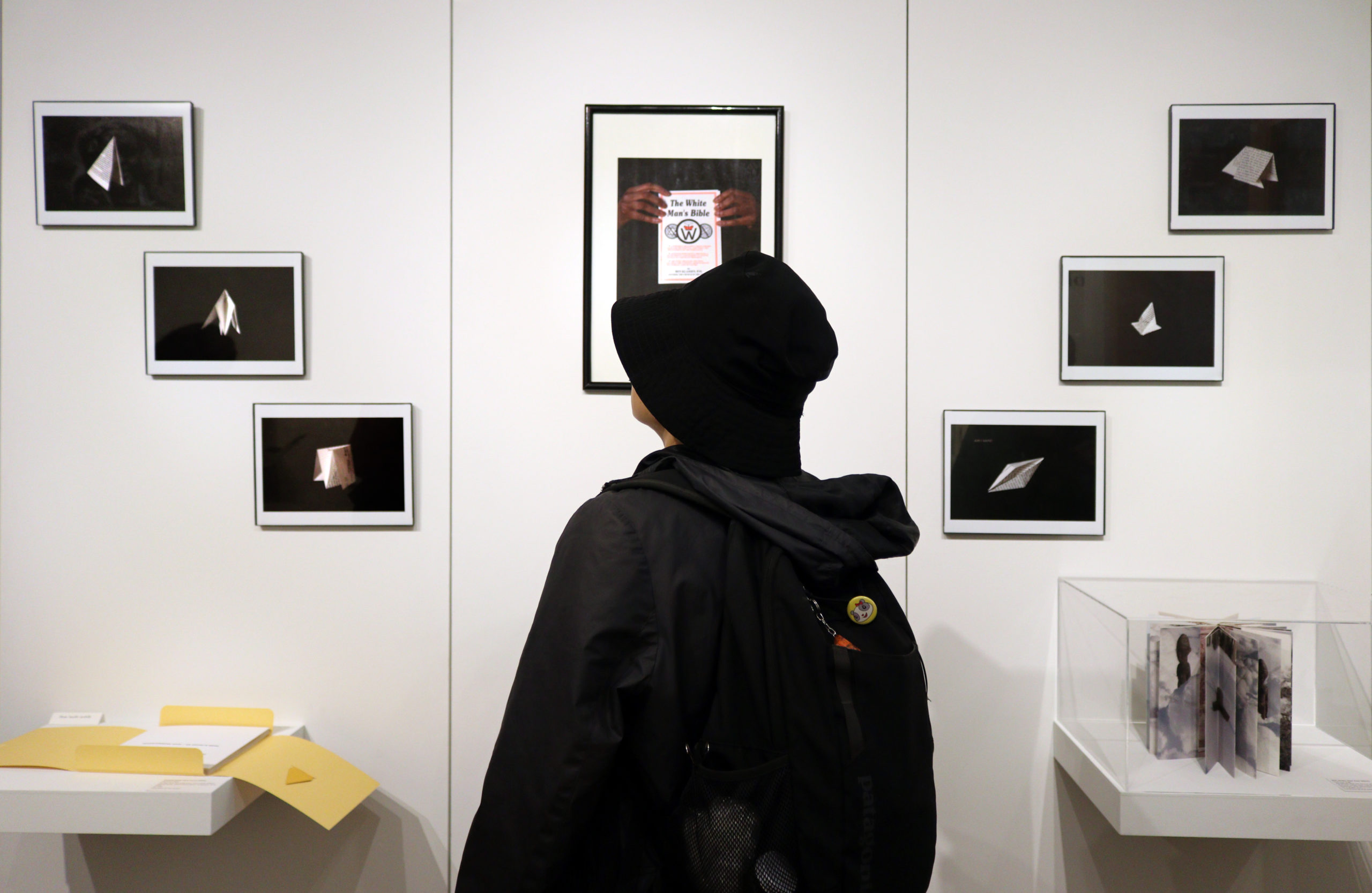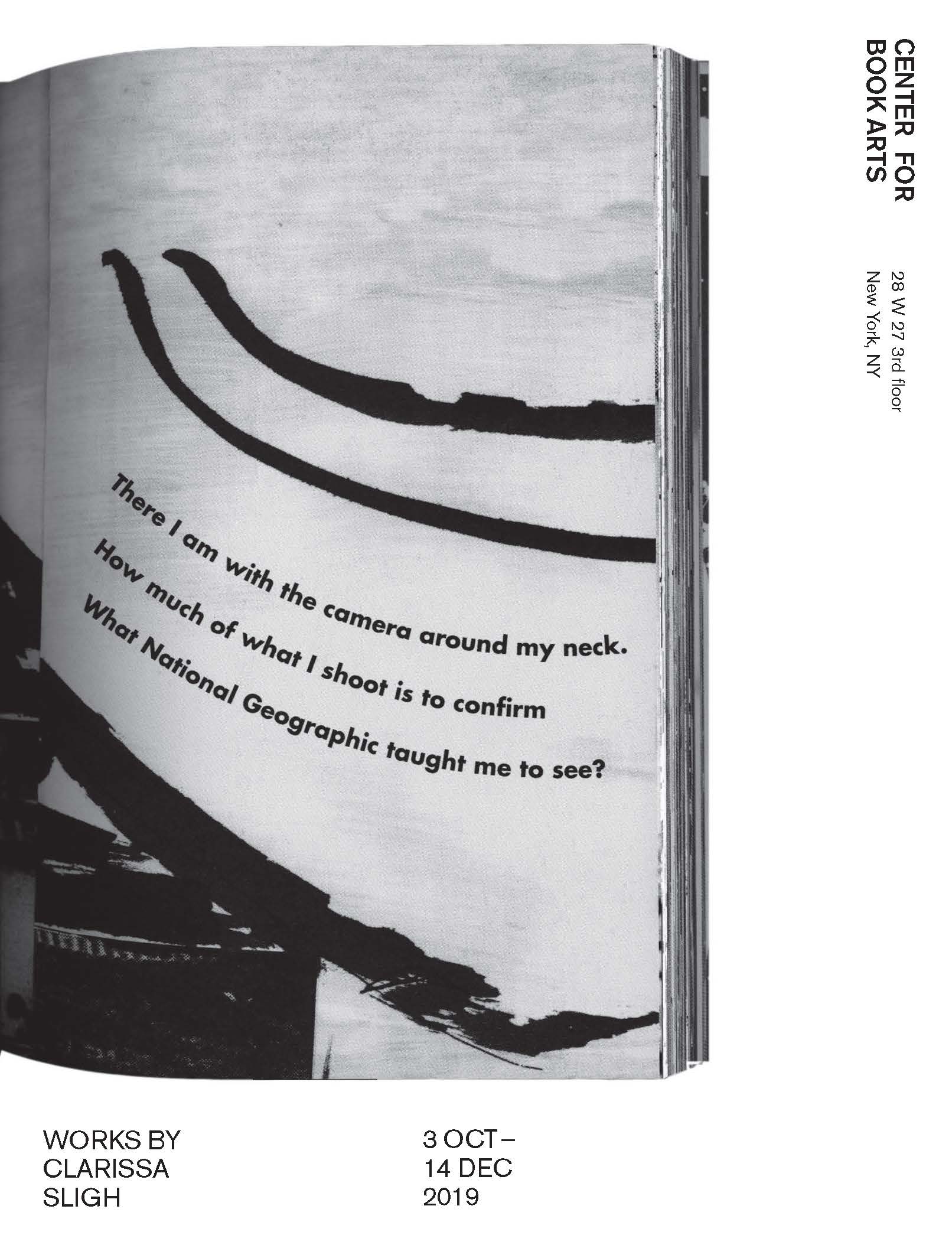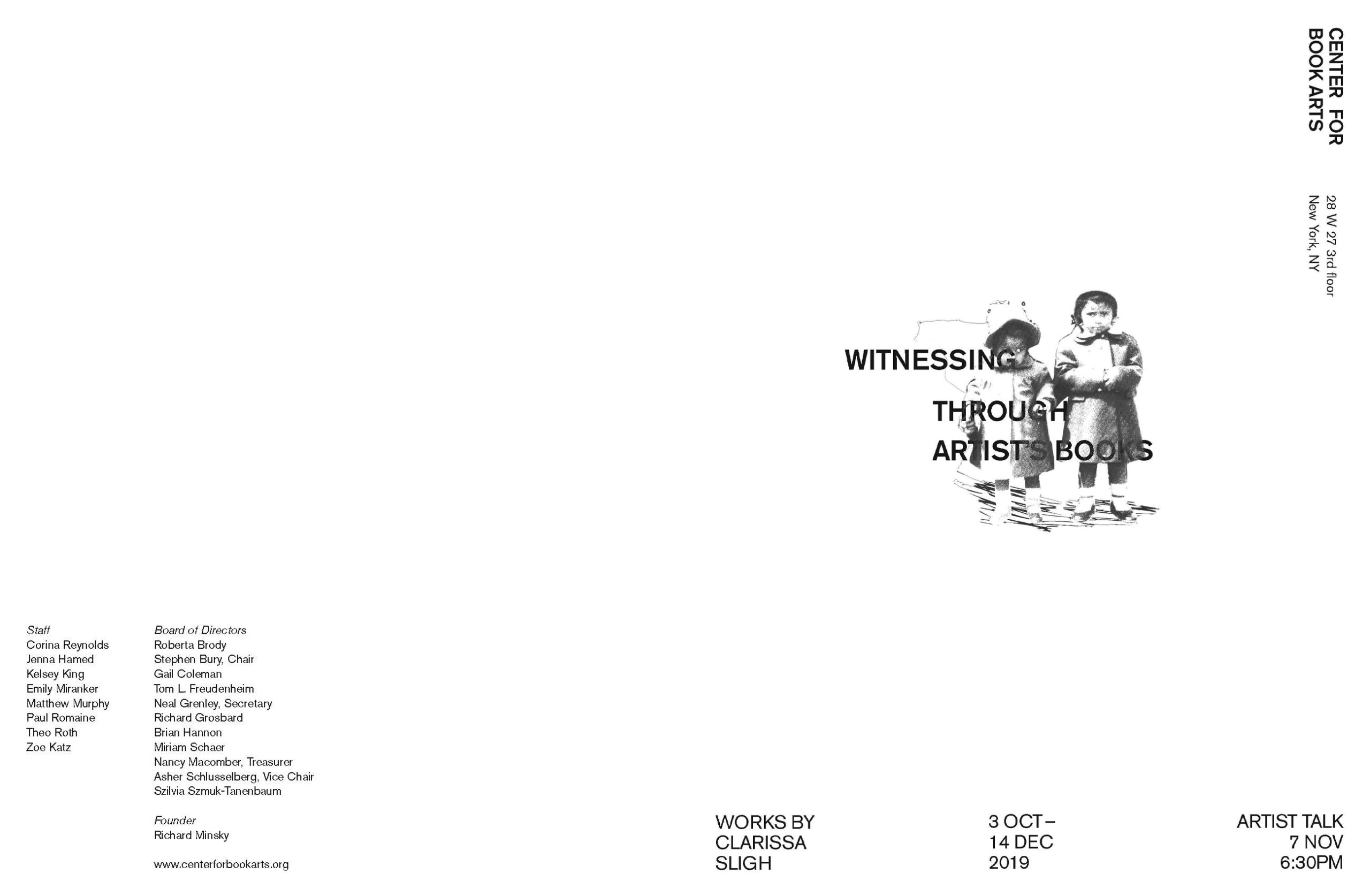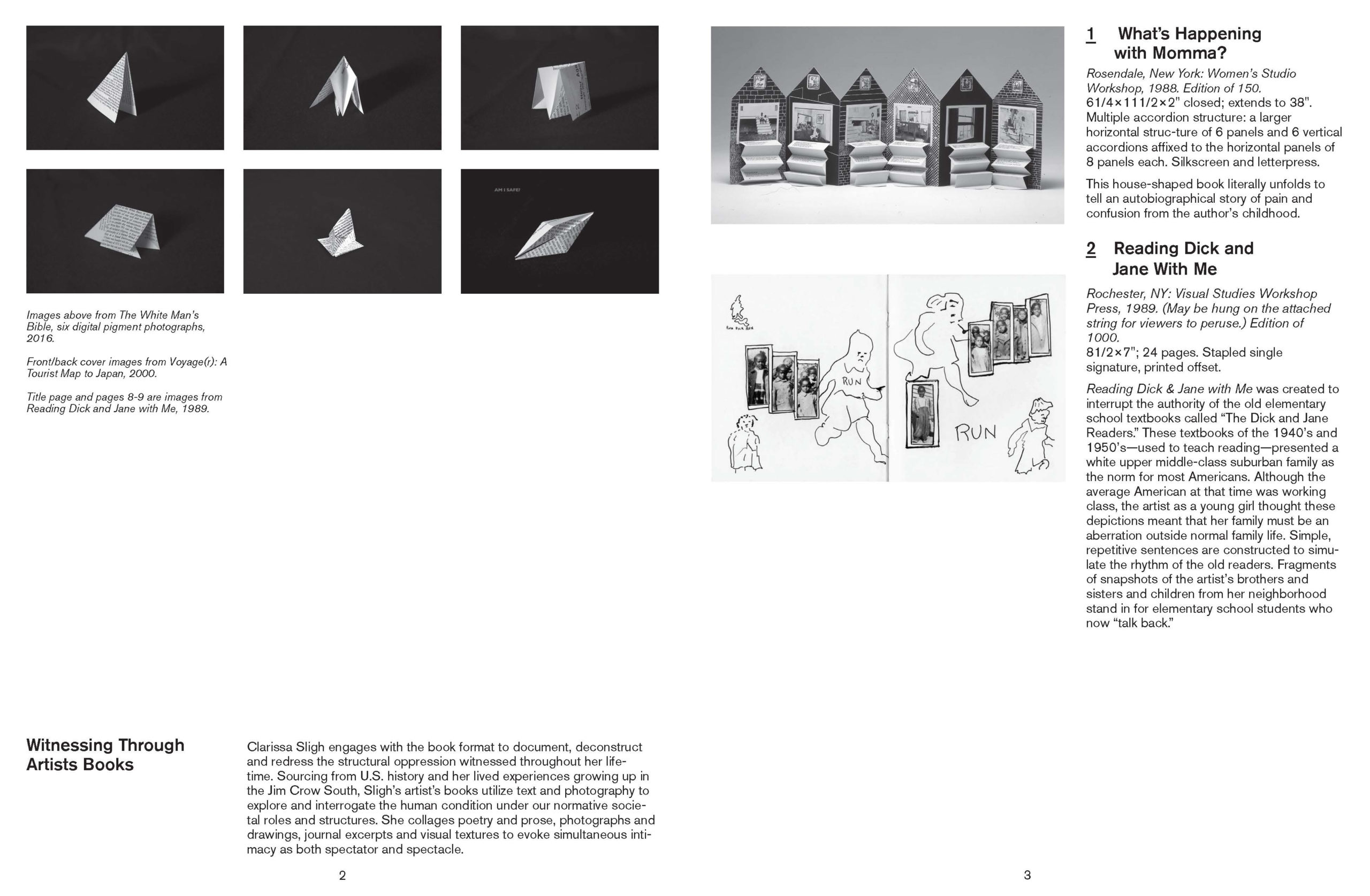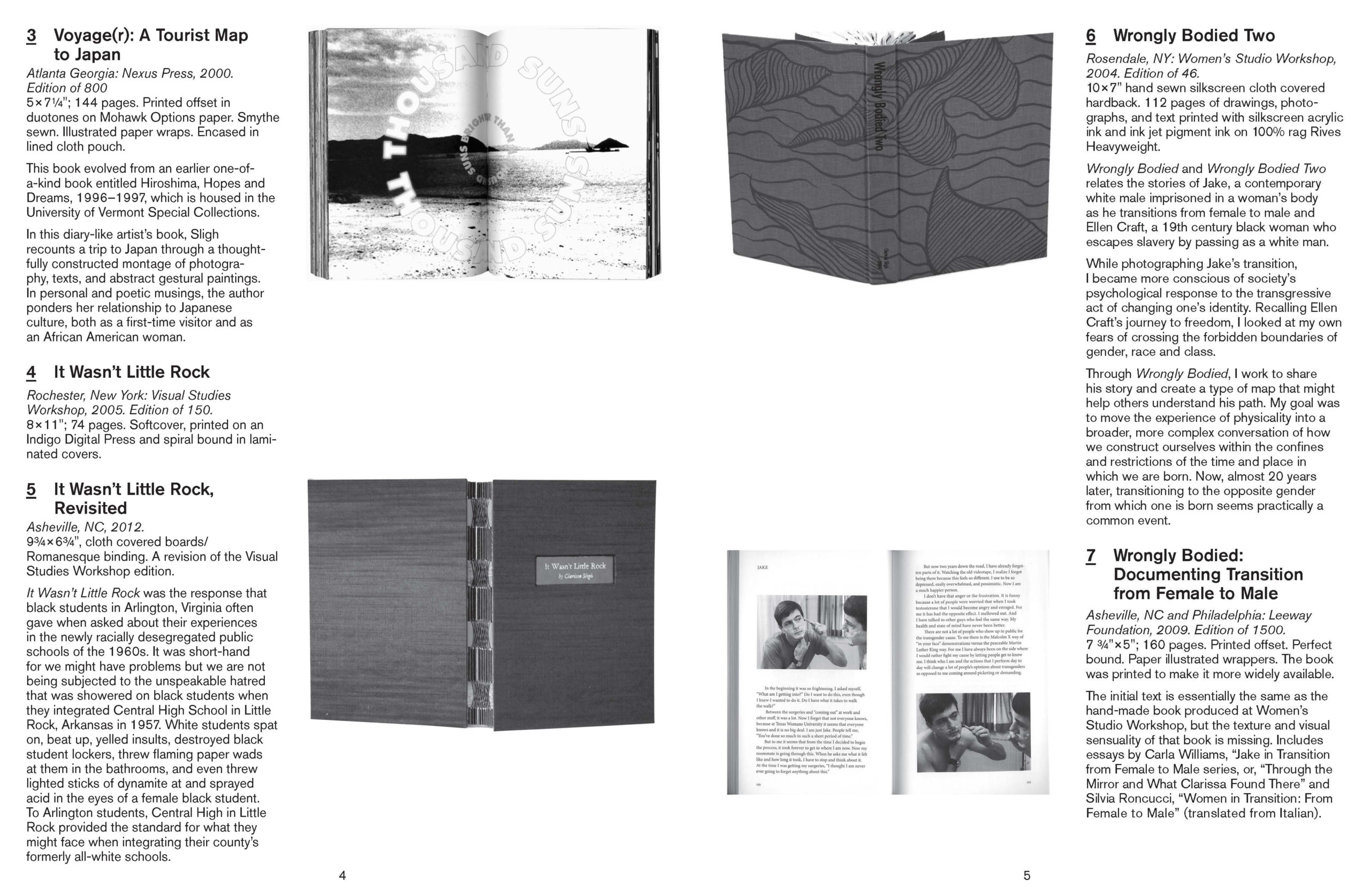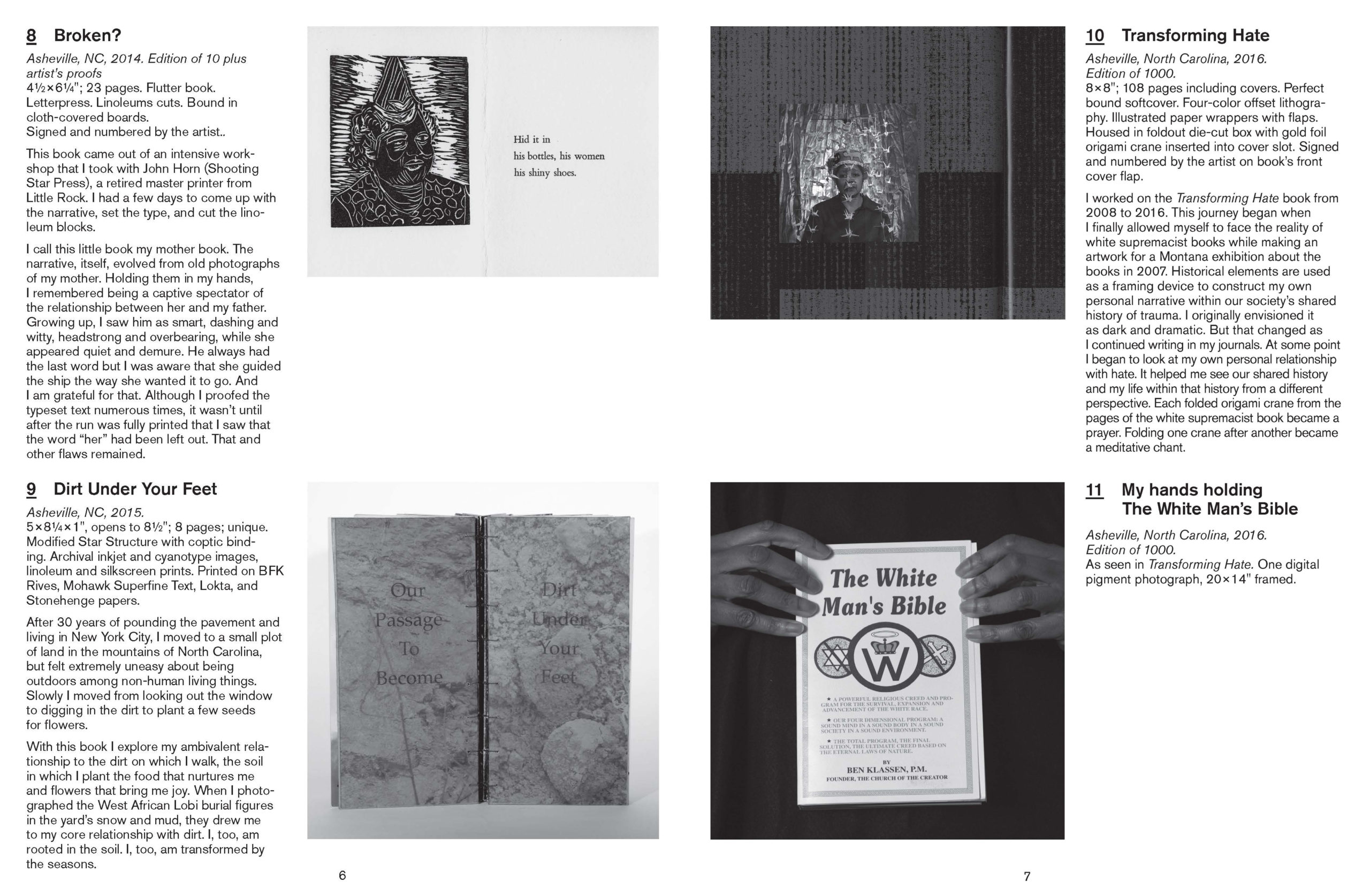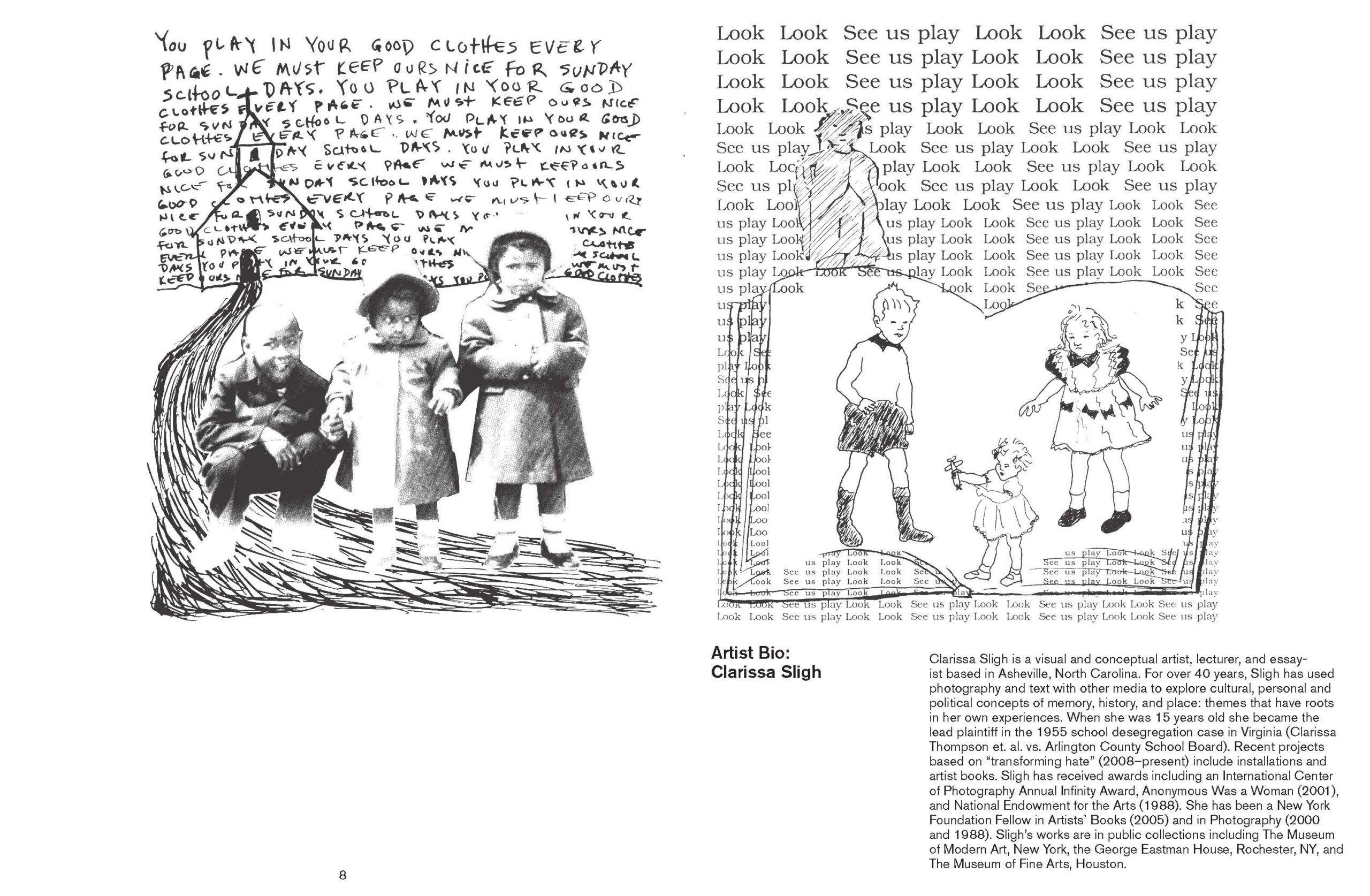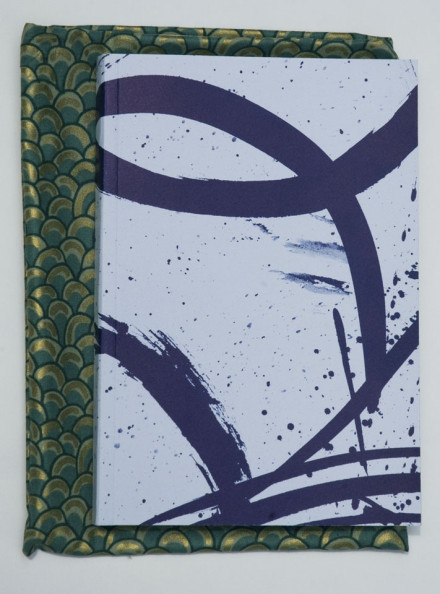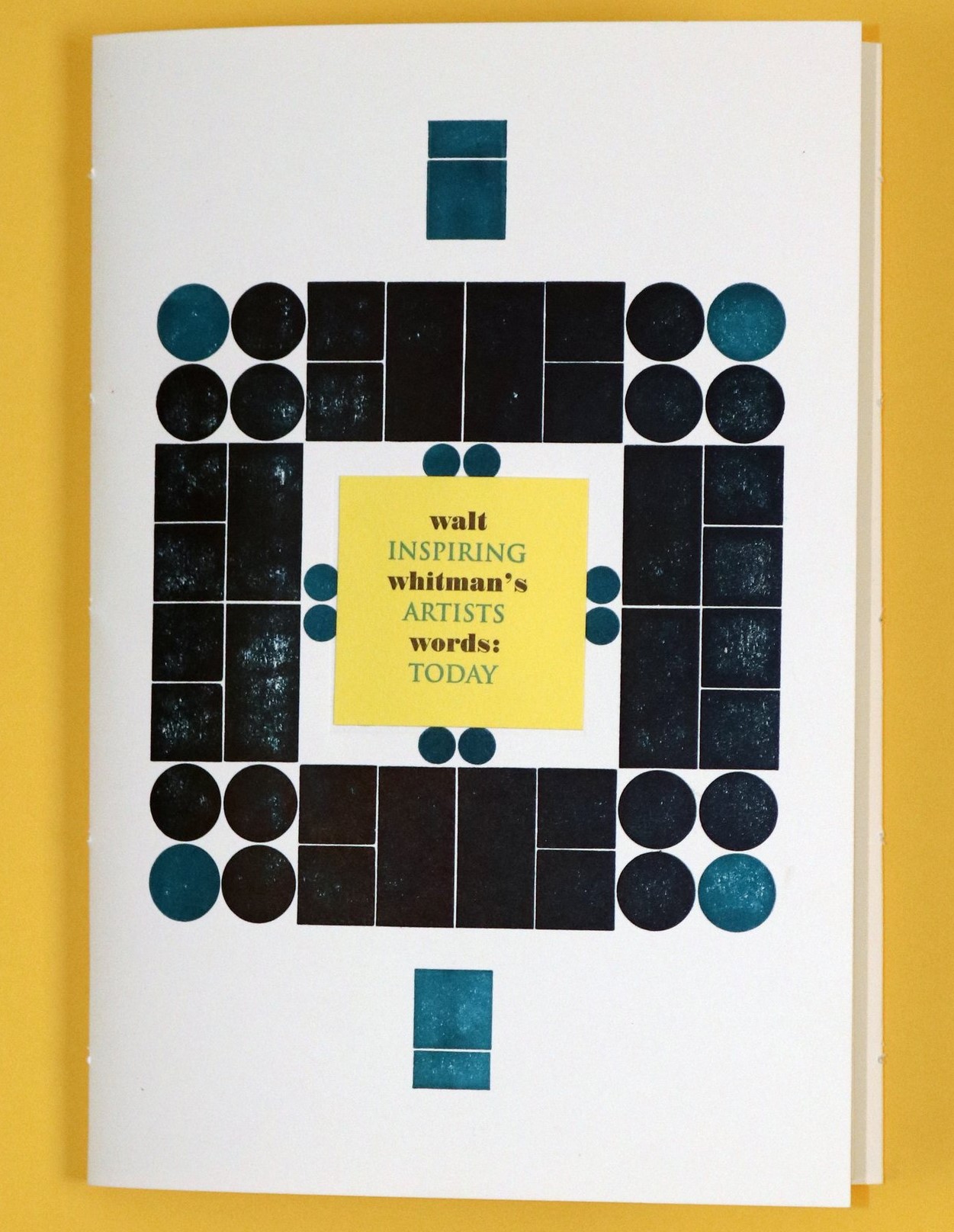Clarissa Sligh engages with the book format to document, deconstruct and redress the structural oppression witnessed throughout her lifetime. Sourcing from U.S. history and her lived experiences growing up in the Jim Crow South, Sligh’s artist’s books utilize text and photography to explore and interrogate the human condition under our normative societal roles and structures. She collages poetry and prose, photographs and drawings, journal excerpts and visual textures to evoke simultaneous intimacy as both spectator and spectacle.
What’s Happening with Momma? (1988)
This house-shaped book literally unfolds to tell an autobiographical story of pain and confusion from the author’s childhood.
Reading Dick and Jane With Me (1989)
Reading Dick & Jane with Me was created to interrupt the authority of the old elementary school textbooks called “The Dick and Jane Readers.” These textbooks of the 1940’s and 1950’s—used to teach reading—presented a white upper middle-class suburban family as the norm for most Americans. Although the average American at that time was working class, the artist as a young girl thought these depictions meant that her family must be an aberration outside normal family life. Simple, repetitive sentences are constructed to simulate the rhythm of the old readers. Fragments of snapshots of the artist’s brothers and sisters and children from her neighborhood stand in for elementary school students who now “talk back.”
Voyage(r): A Tourist Map to Japan (2000)
This book evolved from an earlier one-ofa- kind book entitled Hiroshima, Hopes and Dreams, 1996–1997, which is housed in the University of Vermont Special Collections. In this diary-like artist’s book, with an artistic book cover design to match, Sligh recounts a trip to Japan through a thoughtfully constructed montage of photography, texts, and abstract gestural paintings. In personal and poetic musings, the author ponders her relationship to Japanese culture, both as a first-time visitor and as an African American woman.
It Wasn’t Little Rock, Revisited (2015)
A revision of the Visual Studies Workshop edition. It Wasn’t Little Rock was the response that black students in Arlington, Virginia often gave when asked about their experiences in the newly racially desegregated public schools of the 1960s. It was short-hand for we might have problems but we are not being subjected to the unspeakable hatred that was showered on black students when they integrated Central High School in Little Rock, Arkansas in 1957. White students spat on, beat up, yelled insults, destroyed black student lockers, threw flaming paper wads at them in the bathrooms, and even threw lighted sticks of dynamite at and sprayed acid in the eyes of a female black student. To Arlington students, Central High in Little Rock provided the standard for what they might face when integrating their county’s formerly all-white schools.
Wrongly Bodied Two (2004)
Wrongly Bodied and Wrongly Bodied Two relates the stories of Jake, a contemporary white male imprisoned in a woman’s body as he transitions from female to male and Ellen Craft, a 19th century black woman who escapes slavery by passing as a white man. While photographing Jake’s transition, I became more conscious of society’s psychological response to the transgressive act of changing one’s identity. Recalling Ellen Craft’s journey to freedom, I looked at my own fears of crossing the forbidden boundaries of gender, race and class. Through Wrongly Bodied, I work to share his story and create a type of map that might help others understand his path. My goal was to move the experience of physicality into a broader, more complex conversation of how we construct ourselves within the confines and restrictions of the time and place in which we are born. Now, almost 20 years later, transitioning to the opposite gender from which one is born seems practically a common event.
Wrongly Bodied: Documenting Transition from Female to Male (2009)
The book was printed to make it more widely available. The initial text is essentially the same as the hand-made book produced at Women’s Studio Workshop, but the texture and visual sensuality of that book is missing. Includes essays by Carla Williams, “Jake in Transition from Female to Male series, or, “Through the Mirror and What Clarissa Found There” and Silvia Roncucci, “Women in Transition: From Female to Male” (translated from Italian).
Broken? (2014)
This book came out of an intensive workshop that I took with John Horn (Shooting Star Press), a retired master printer from Little Rock. I had a few days to come up with the narrative, set the type, and cut the linoleum blocks. I call this little book my mother book. The narrative, itself, evolved from old photographs of my mother. Holding them in my hands, I remembered being a captive spectator of the relationship between her and my father. Growing up, I saw him as smart, dashing and witty, headstrong and overbearing, while she appeared quiet and demure. He always had the last word but I was aware that she guided the ship the way she wanted it to go. And I am grateful for that. Although I proofed the typeset text numerous times, it wasn’t until after the run was fully printed that I saw that the word “her” had been left out. That and other flaws remained.
Dirt Under Your Feet (2015)
After 30 years of pounding the pavement and living in New York City, I moved to a small plot of land in the mountains of North Carolina, but felt extremely uneasy about being outdoors among non-human living things. Slowly I moved from looking out the window to digging in the dirt to plant a few seeds for flowers. With this book I explore my ambivalent relationship to the dirt on which I walk, the soil in which I plant the food that nurtures me and flowers that bring me joy. When I photographed the West African Lobi burial figures in the yard’s snow and mud, they drew me to my core relationship with dirt. I, too, am rooted in the soil. I, too, am transformed by the seasons.
Transforming Hate (2016)
I worked on the Transforming Hate book from 2008 to 2016. This journey began when I finally allowed myself to face the reality of white supremacist books while making an artwork for a Montana exhibition about the books in 2007. Historical elements are used as a framing device to construct my own personal narrative within our society’s shared history of trauma. I originally envisioned it as dark and dramatic. But that changed as I continued writing in my journals. At some point I began to look at my own personal relationship with hate. It helped me see our shared history and my life within that history from a different perspective. Each folded origami crane from the pages of the white supremacist book became a prayer. Folding one crane after another became a meditative chant.
